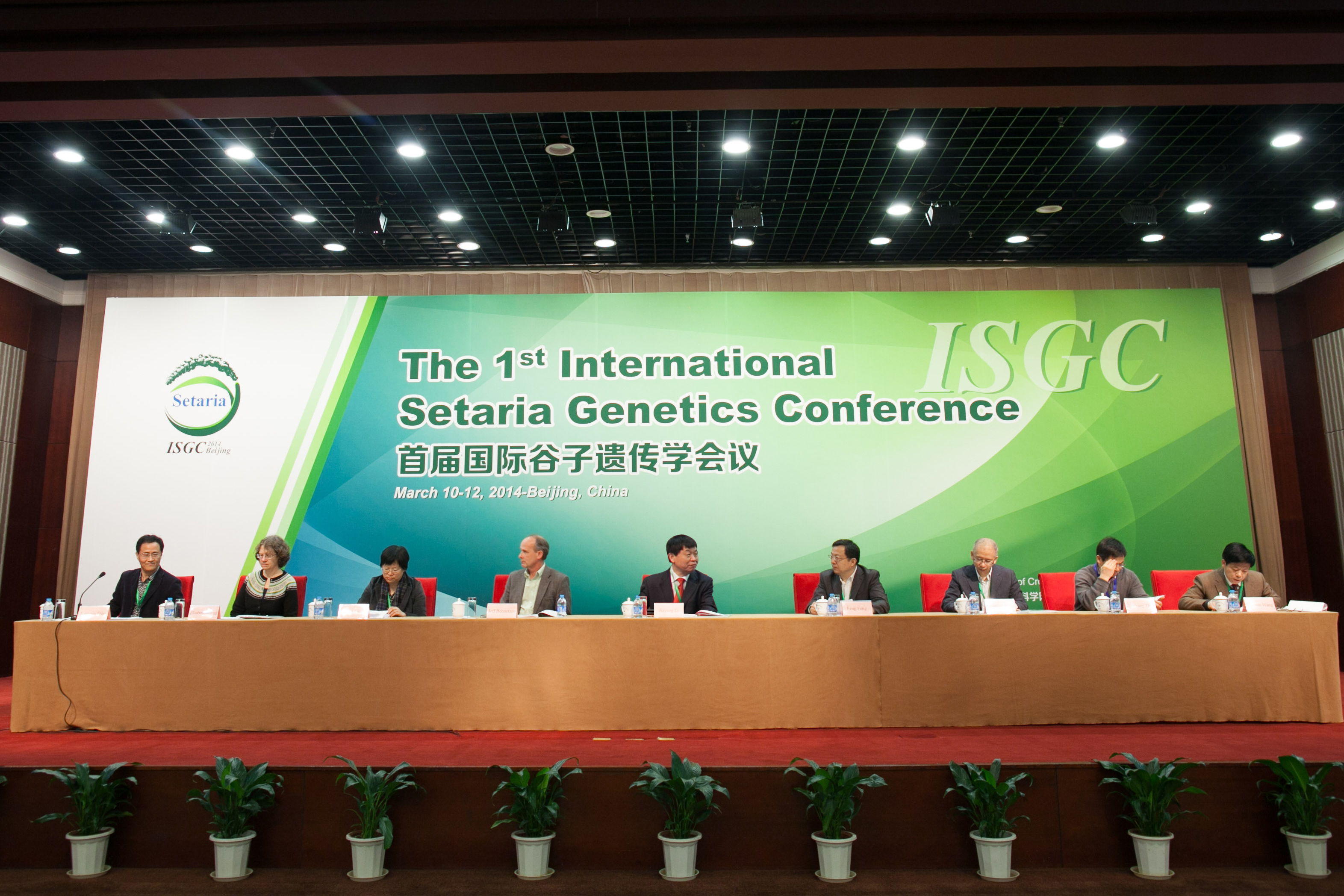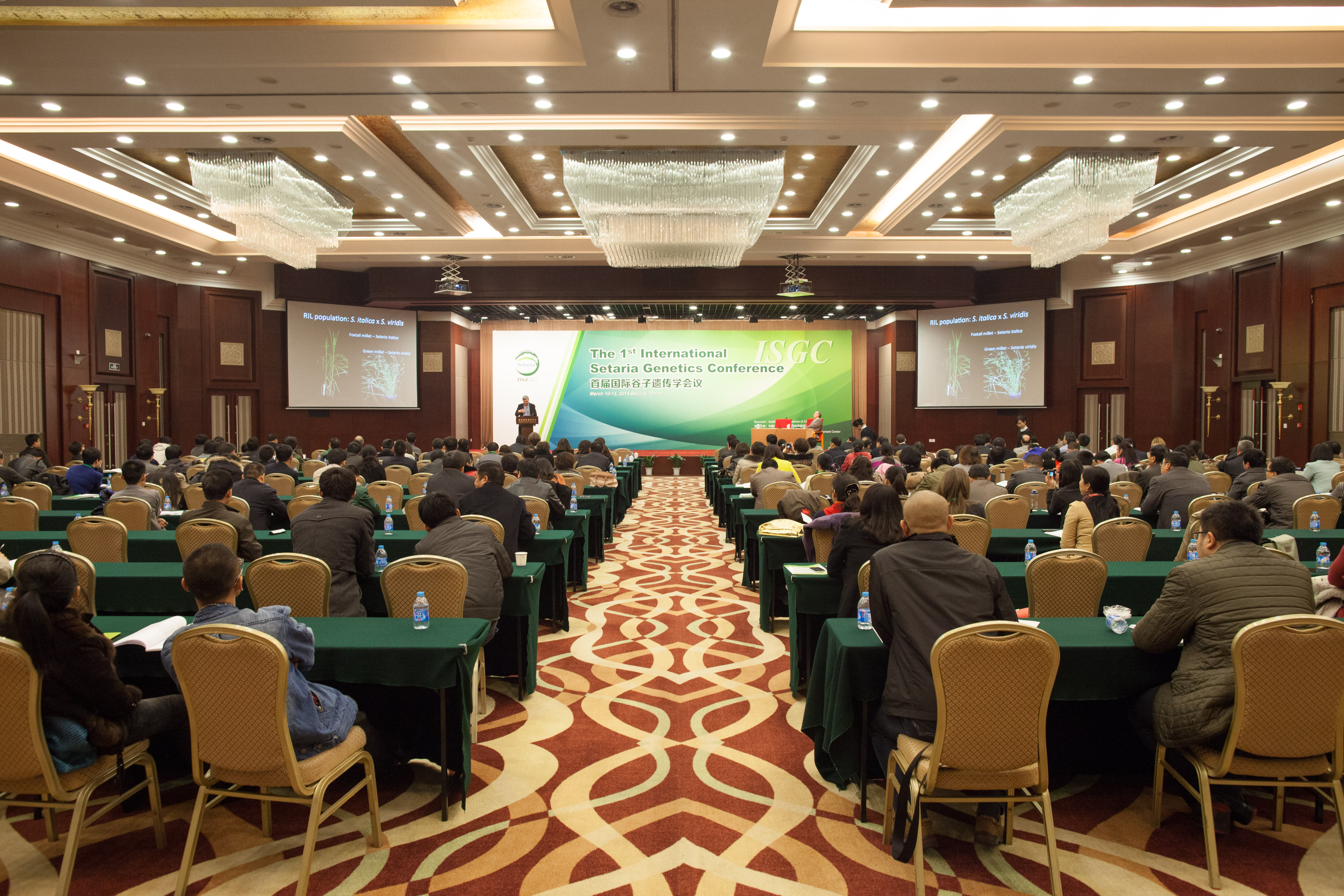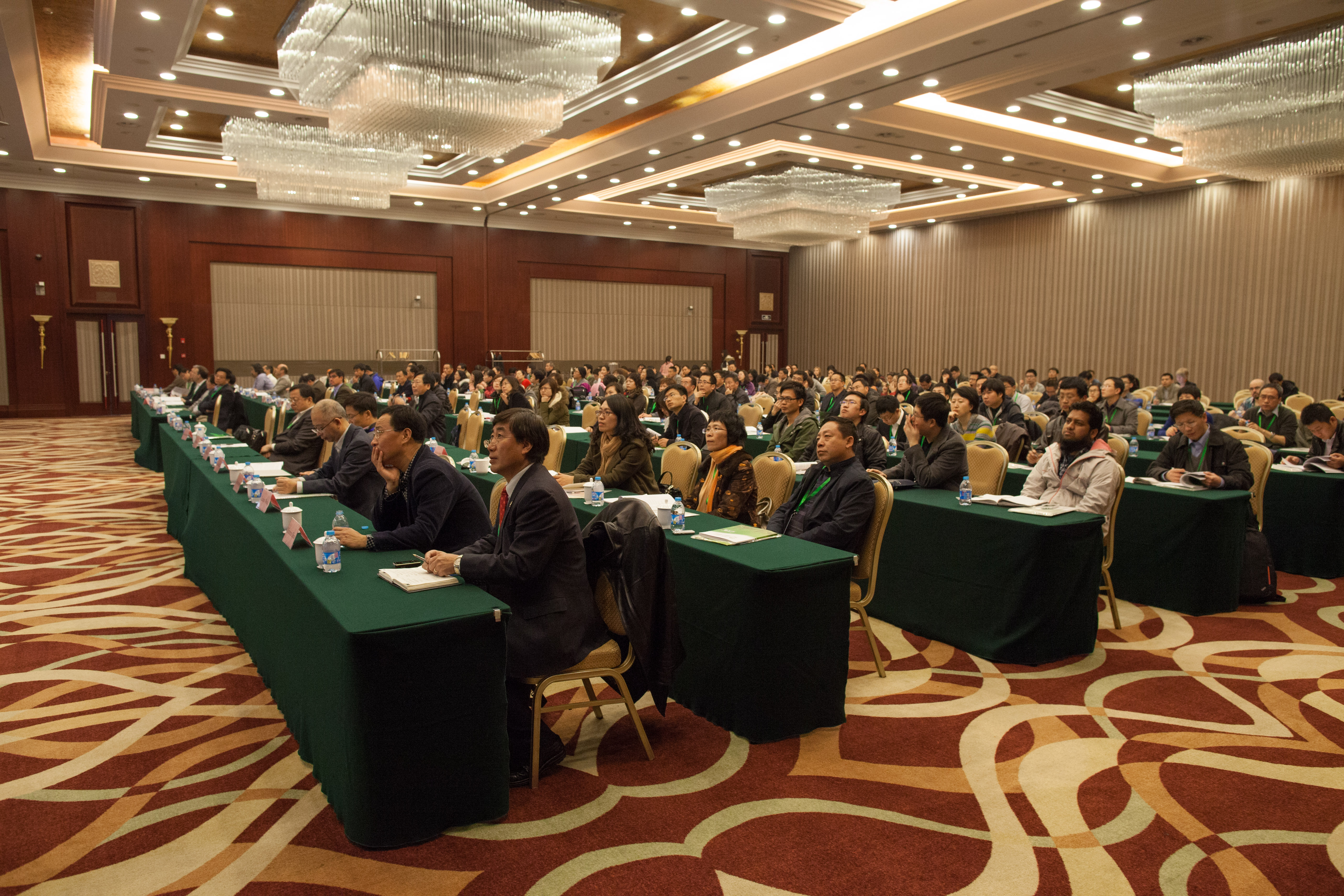分享到
Setaria established as a model grass system
Setaria is a genus of grasses in the Poaceae family. From March 10 to 12, the 1st International Setaria Genetics Conference (ISGC 2014) was held at the Beijing International Convention Center in Beijing. The conference was organized by Institute of Crop Sciences (ICS), Chinese Academy of Agricultural Sciences (CAAS), and more than 200 conventioneers mainly from China, America, Britain, Australia and Japan participated in this important event with focuses on the promotion of Setaria as a model plant for grass functional genomics.


Li Jiayang, Co-chair of ISGC2014, Vice Minister of Ministry of Agriculture (MOA) and the President of CAAS, in his welcome address speech said, model organisms play a vital role in enabling new scientific findings and the development of new technologies. Findings in early genetic model plant such as, Pea (Pisum sativum L.), fruit fly (Drosophila melanogaster) and maize (Zea mays), laid the foundations for modern genetics. Research on the named species was the result of the discovery of the basic laws of genetics and heritability, such as transposable elements, and the new field of cytogenetics. The biological nature of two species of Setaria, domesticated foxtail millet (S. italica Beauv.) and its wild ancestor green foxtail (S. viridis Beauv.), makes the ideal models for functional genomics studies in the Panicoid grasses. Both species are diploid and have tractability of small genomes (490 Megabases, about one fifth the size of the maize genome), short generation times (50-90 days), small morphological stature and prolific per plant seed production, which make Setaria suitable as a model for deciphering abiotic stress tolerance and C4 photosynthesis mechanisms in crop species. Realizing its ideal nature as a model system, many famous labs in the world have begun to work on Setaria.
 President Li mentioned challenges and future work of Setaria genetics, such as establishing a stable and efficient transformation protocol, constructing a well-organized online database devoted to Setaria genetic and genomic information, screening a core set of varieties and populations that will be studied by individual laboratories and assembling a Setaria handbook describing genetic and genomic techniques in this species.
President Li mentioned challenges and future work of Setaria genetics, such as establishing a stable and efficient transformation protocol, constructing a well-organized online database devoted to Setaria genetic and genomic information, screening a core set of varieties and populations that will be studied by individual laboratories and assembling a Setaria handbook describing genetic and genomic techniques in this species.
Apart from Setaria serving as a genetic model for the panicoid crops and C4 photosynthesis, it will also be an excellent model genetic systems for understanding the processes of domestication and variety improvement, the evolution of abiotic stress tolerance, comparative mapping approaches that span multiple species, the evolution of the grasses, and traits essential for biomass production by novel biofuel crops.
 The conference outputs is to promote the establishment of efficient transformation methods, helps to kick-start the construction of a well-organized Setaria website, and most importantly, it helps to establish an international Setaria community.
The conference outputs is to promote the establishment of efficient transformation methods, helps to kick-start the construction of a well-organized Setaria website, and most importantly, it helps to establish an international Setaria community.
The International Setaria Genetics Conference (ISGC) created a platform for the exchange of data and experience among researchers within China and around the world working on this field, so as to promote maturation of Setaria as a model system.
 President Li mentioned challenges and future work of Setaria genetics, such as establishing a stable and efficient transformation protocol, constructing a well-organized online database devoted to Setaria genetic and genomic information, screening a core set of varieties and populations that will be studied by individual laboratories and assembling a Setaria handbook describing genetic and genomic techniques in this species.
President Li mentioned challenges and future work of Setaria genetics, such as establishing a stable and efficient transformation protocol, constructing a well-organized online database devoted to Setaria genetic and genomic information, screening a core set of varieties and populations that will be studied by individual laboratories and assembling a Setaria handbook describing genetic and genomic techniques in this species.Apart from Setaria serving as a genetic model for the panicoid crops and C4 photosynthesis, it will also be an excellent model genetic systems for understanding the processes of domestication and variety improvement, the evolution of abiotic stress tolerance, comparative mapping approaches that span multiple species, the evolution of the grasses, and traits essential for biomass production by novel biofuel crops.
 The conference outputs is to promote the establishment of efficient transformation methods, helps to kick-start the construction of a well-organized Setaria website, and most importantly, it helps to establish an international Setaria community.
The conference outputs is to promote the establishment of efficient transformation methods, helps to kick-start the construction of a well-organized Setaria website, and most importantly, it helps to establish an international Setaria community. The International Setaria Genetics Conference (ISGC) created a platform for the exchange of data and experience among researchers within China and around the world working on this field, so as to promote maturation of Setaria as a model system.
Latest News
-
 Apr 18, 2024Opening Ceremony of the Training Workshop on Wheat Head Scab Resistance Breeding and Pest Control in Africa Held in CAAS
Apr 18, 2024Opening Ceremony of the Training Workshop on Wheat Head Scab Resistance Breeding and Pest Control in Africa Held in CAAS -
 Apr 03, 2024IPPCAAS Co-organized the Training Workshop on Management and Application of Biopesticides in Nepal
Apr 03, 2024IPPCAAS Co-organized the Training Workshop on Management and Application of Biopesticides in Nepal -
 Mar 28, 2024Delegation from the School of Agriculture and Food Science of University College Dublin, Ireland Visit to IAS, CAAS
Mar 28, 2024Delegation from the School of Agriculture and Food Science of University College Dublin, Ireland Visit to IAS, CAAS -
 Mar 25, 2024Director of World Food Prize Foundation visited GSCAAS
Mar 25, 2024Director of World Food Prize Foundation visited GSCAAS -
 Mar 20, 2024Institute of Crop Sciences (ICS) and Syngenta Group Global Seeds Advance Collaborative Research in the Seed Industry
Mar 20, 2024Institute of Crop Sciences (ICS) and Syngenta Group Global Seeds Advance Collaborative Research in the Seed Industry
